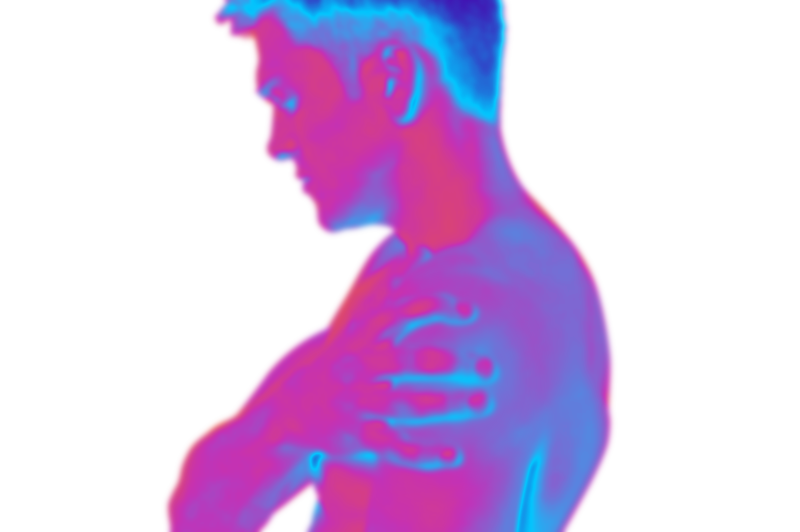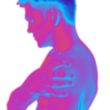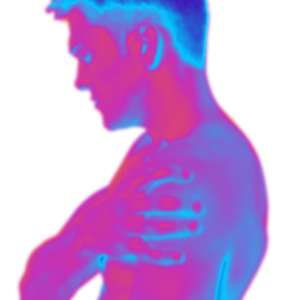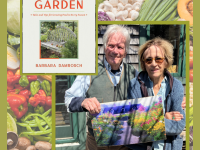Pain is a great motivator for seeking solutions to it. After 13 years of varying levels of chronic pain, here’s my summary of the best non-pharmaceutical options available.
Nutritional Therapies
Magnesium
Some studies show that magnesium decreases the perception of pain by acting on receptors in the nervous system, (R1, R2, R3), while another found it was no different from placebo. (R)
Magnesium significantly relieved tender points and depression in fibromyalgia patients, especially when combined with the antidepressant amitriptyline. Interestingly, the lower the patients’ magnesium levels were, the worse their symptoms. (R1, R2)
IV magnesium aided in the reduction of stubborn nervous pain in cancer patients. (R)
Omega-3 Fatty Acids
In people with chronic pain, those with a higher Omega 6: Omega 3 ratio in their diet had more pain and were more impaired. (R)
High-dose omega-3s healed damaged nerves and reduced neuropathy in animals (R) and improved neuropathic pain in a small human trial. (R)
Omega-3s may be as effective as NSAIDs in treating pain. (R)
A meta-study of inflammatory joint pain found omega-3s reduce NSAID use, joint pain, and morning stiffness. (R)
Studies generally use daily doses in the 1200mg-7200mg range. Animal sources (eg, fatty fish) may be superior to plant sources. (R1, R2)
Vitamin E
Vitamin E, an antioxidant which protects cell walls from oxidative damage (R), has been found to be low in those with CFS, (R) with one study finding that the lower vitamin E was, the more muscle pain. (R)
1600mg of vitamin E daily for six months was effective in reducing shingles pain, known as neuralgia. (R) As a fat-soluble nutrient (ie, that builds in the body), high doses like that generally aren’t advised.
Etc.
CBD oil (now legal for recreational use in Maine) is fairly powerful with none of the hallucinatory/flattening properties of THC. If you don't like one brand, it's worth trying another, as there can be contaminants in some brands that some people are sensitive to.
Caffeine improves pain in some and is included in some acetaminophen (Tylenol) products. Dosing is determined by tolerance.
Boosting Endorphins
Endorphins are endogenous morphine-like chemicals – ie, the painkillers your body produces itself. Increasing levels of them will reduce overall pain levels regardless of whether they were low to begin with.
As you probably already know, exercise is a powerful way to trigger endorphin release.
Laughter
Laughter – especially laughing with other people – reduces stress and releases endorphins, which increases pain tolerance. (R1, R2, R3, R4)
Singing
Singing triggers endorphin release and is a great mood-booster. (R1, R2) It also stimulates the vagus nerve, which sends signals in the nervous system for your body to “rest and digest”.
I added my favorite songs to sing to a Youtube playlist and often sing for 30 minutes or so.
Capsaicin
Capsaicin is a compound present in hot peppers that triggers endorphin release. It can be purchased as a supplement, or simply indulge in spicy cuisine if able.
Acupuncture
Acupuncture has complex beneficial effects on the body’s endorphin system, (R1, R2).
There are two caveats, however. First is that the amount of pain you’ll feel varies quite a bit from one practitioner to another, so it’s important to find someone whose technique doesn’t push you past your limits.
The second caveat is that if you’re highly pain-sensitive – ie, if a blood draw or injection is highly stressful or painful for you – acupuncture will likely feel similarly unpleasant.
Qi Gong and Tai Chi, which work off the same energetic principles in Traditional Chinese Medicine, may be good alternatives.
Gabaergics
Gabaergics are substances that raise GABA, your nervous system’s primary calming neurotransmitter. Essentially, GABA reduces transmission in the brain and nerves, which has a calming effect.
Gabaergics, in my experience, are soothing, blunt pain, and can cause giddyness. They’re a great complement to OTC painkillers.
Lithium Orotate
Lithium orotate is a mineral available in supplement form related to pharmaceutical lithium.
Daily doses can range from 1-8 caps. As with all gabaergics, too high a dose will produce a state similar to drunkenness, including giddyness and some generally mild discoordination. Start low and go slow, seeing what dose works best to blunt the pain without impairing you.
Theanine, Scullcap, and Kava-Kava
The amino acid theanine and the herbs scullcap and kava-kava also increase GABA. Kava-kava is a powerful relaxant with a potent taste, so I recommend using capsules over the powder or tea forms.
Theanine has wide ranges in dosing, so experimenting with it may show it to be effective in treating pain for you. Doses range from 50-800mg/day and it is very cheap when bought as powder in bulk.
Heat and Cold
Heat and cold are both useful therapeutically for general muscle and joint pain.
There’s debate as to which is superior for muscle recovery, but ultimately this is an area where you should experiment.
Heat Therapy
It goes without saying that hot baths are very soothing; try adding some relaxing essential oil, like lavender or jasmine.
Buying a home sauna can cost under $100 (look for ones that look like tents or sleeping bags; you don’t need a fancy wooden room).
I recommend spending slightly extra for a sauna with infrared, as you’ll sweat at lower temperatures and it’s actually anti-inflammatory.
Drink plenty of water before, during and after; add salt if sweating makes you feel faint. Jump in the shower immediately after getting out so you don’t reabsorb toxins contained in sweat.
Cold Therapy
Short bursts of cold -ie, a cold shower or bath, or letting yourself get cool from climate alone – calm the nervous system and are excellent for reducing pain.
I like to jump in a cold shower straight from the sauna.
Keep in mind that most of the discomfort with cold comes from your reaction to it (ie, clenching muscles, chattering jaw, shrieking). If you consciously relax into it, within a few seconds you’ll start to feel the benefits of it.
And remember, the aim of cold therapy is only to have goosebumps. You should not be going numb or losing circulation.
Anti-Inflammatory Therapies
Earthing
Earthing, AKA grounding, is the practice of having the skin in contact with the earth. You can also achieve benefits by walking on earth with leather-soled shoes (since they’re conductive) or using earthing/grounding pads, sheets, and other indoor products.
Grounding’s wide-ranging benefits are due to the earth’s electrical conductance. Grounding provides your body with electrons that bind to free radicals, or substances responsible for oxidative inflammation, to neutralize them. (R)
Several studies and case studies testing the effects of using grounding products while sleeping have reported a reduction in pain and improved sleep quality (R1, R2, R3).
Biohacking
At Camden Hyperbaric, I offer several therapies with powerful anti-inflammatory effects.
Hyperbaric oxygen triggers sustained and augmented production of antioxidant enzymes (R), molecular hydrogen possesses a potent antioxidant capacity that reduces disease activity in many acute and chronic inflammatory illnesses (R), and photobiomodulation tamps down oxidative stress through numerous mechanisms (R).
Neural Retraining
Neural retraining programs like ANS Rewire, The Gupta Program and Dynamic Neural Retraining System give you psychological techniques to desensitize your nervous system over time.
Over a period of weeks or months, you’ll find you’re more relaxed, sleeping better, experiencing less pain, and happier.
I’ve seen improvement in all these areas with Dynamic Neural Retraining System. Read more about my experience with it here.
























